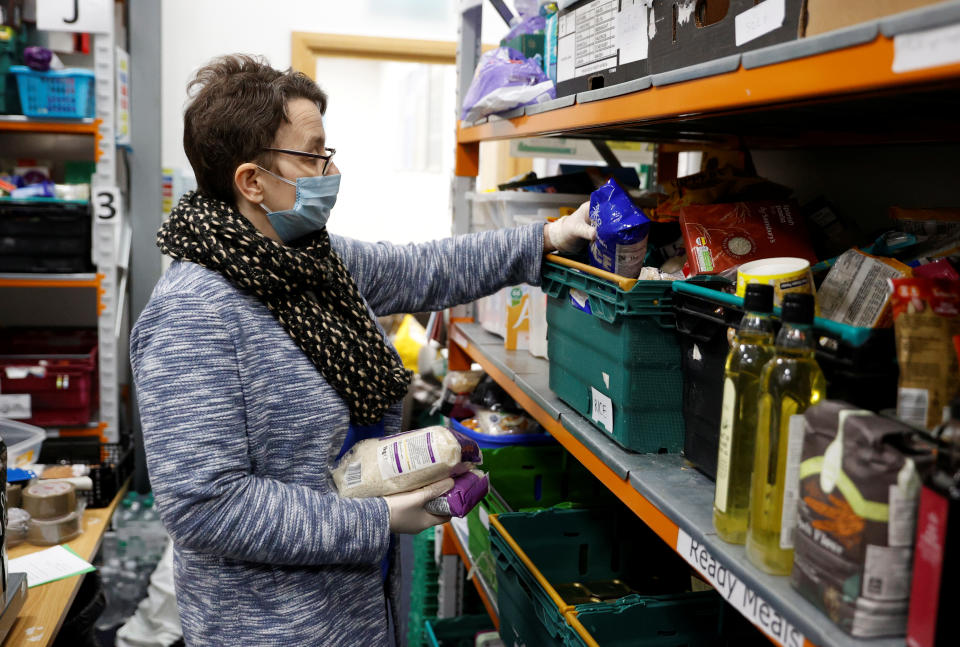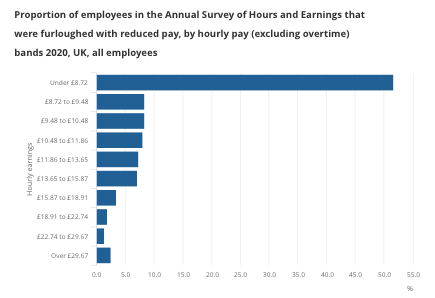Furlough pushed 2 million employees below the UK minimum wage

More than 2 million UK workers were forced to get by on less than the national minimum wage as employers furloughed staff and slashed wages earlier this year.
Official wage data published on Tuesday lays bare the toll of the coronavirus crisis and government measures on household incomes.
Around one in 14 or 7.2% of all employees reported hourly earnings below £8.72 ($11.33) in April, as the economy reeled from COVID-19 and nationwide lockdowns. Just over half of those earning below the legal minimum were furloughed on reduced pay.
The analysis of survey data by the Office for National Statistics (ONS), some of the most detailed statistics available on UK earnings, shows staff in the lowest-paying jobs were more than five times as likely to be furloughed on slashed wages.
Take-up of the furlough scheme peaked after its launch, with employers receiving wage subsidies for millions of staff on leave. But the government only paid 80% of employee’s regular wages, and the data suggests low-paid workers had a lower chance of their employer topping it up to its usual rate.
READ MORE: UK prime minister doubles support for self-employed in lockdown

Almost two in five staff in accommodation and food services were furloughed on reduced pay, far higher than the employee average of 11% across the economy.
Meanwhile fewer than one in 20 higher-paid workers were furloughed on reduced pay.
Unions demanded the government ensure no furloughed worker was left to get on less than the legal minimum wage as lockdown restrictions tighten further.
“No-one should be earning below the national minimum wage – especially in the middle of a crisis,” said Frances O’Grady, general secretary of the Trades Union Congress (TUC).
“Many on furlough have not had their incomes topped up by employers and have been forced to get by on less. That is not right.
“The government cannot stand by while millions are plunged into financial hardship.”
WATCH: UK furlough scheme extended until December
Nye Cominetti, a senior economist at the Resolution Foundation think tank, noted: “Young people and low-paid workers in customer-facing roles, such as hospitality and leisure, were hit hard during the first lockdown, and are likely to be hit hardest again during the coming lockdown too.”
He added: “Given the scale of the economic shock facing Britain, today’s data also confirms how much of a living standards lifeline the Job Retention Scheme is for millions of often low-paid staff.
“But furloughing can’t completely shield workers from the effects of the crisis. With many employers unable to top up staff wages, around two million workers were paid less than the legal minimum wage last April.”
The Treasury has been approached for comment.

 Yahoo Finance
Yahoo Finance 